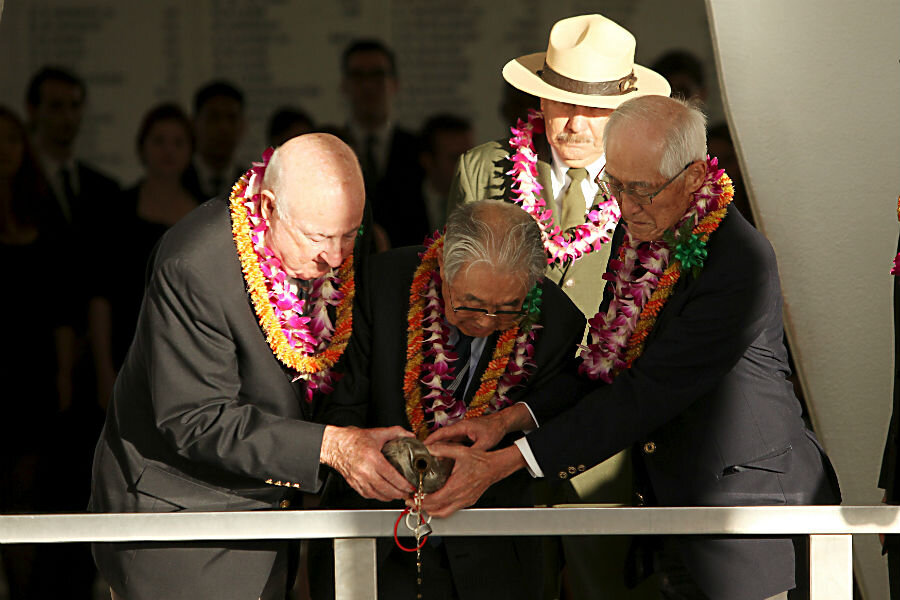Remembering Pearl Harbor, old enemies pour one out together
Loading...
Seventy-four years ago, they were sworn enemies. But on Sunday morning, they stood side-by-side in commemoration of Pearl Harbor.
Former US Air Force Col. Jack DeTour and Japanese fighter pilot Shiro Wakita met for the first time as part of the "Blackened Canteen" service, at the USS Arizona Memorial outside Honolulu, Hawaii. Together gripping a battered and blackened US military-issue metal canteen, the former enemies poured whiskey into the watery grave of the American ship sunk by Japanese bombers on Dec. 7, 1941. The attack took 2,403 lives and catalyzed the United States' participation in World War II.
"To know we have this friendship is great. It's fantastic," said Colonel DeTour, who now lives in Honolulu.
The battered canteen was found in 1945 by residents in Shizuoka, Japan. Two B-29 US bombers had collided and there were casualties on both sides – the American soldiers were even buried alongside Japanese citizens killed in the bombing raid. The war relic was found in the debris, full of whiskey.
In the 1980s, Japanese residents brought the flask to Pearl Harbor in what would become an annual ceremony celebrating peace and the friendship between the nations – once combatants, now allies.
No Pearl Harbor survivors participated in the canteen ceremony. The last surviving officer of the USS Arizona, Joseph Langdell, died on Feb. 4 in California, according to Gary Meyers, spokesman for the Pacific Aviation Museum-Pearl Harbor. But other veterans like DeTour, who joined the Air Force the year after Pearl Harbor, and Mr. Wakita, who joined the Imperial Japanese Navy in 1943, carry on the ceremony in their names.
The canteen is kept by Dr. Hiroya Sugano, the director of the Zero Fighter Admirers' Club. He brings it to Hawaii every year because it’s a powerful symbol of war and peace.
"The blackened canteen is an inspiration for peace," he said.
This report contains material from Reuters and The Associated Press.








